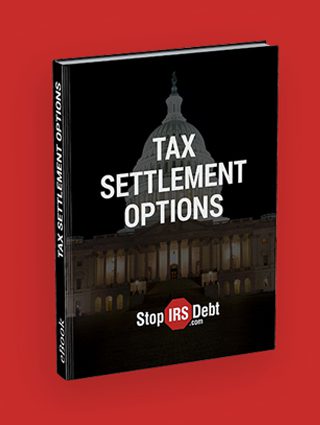- browse by category
- Audit Assistance
- Business and Taxes
- Celebrities in Tax Debt
- Cryptocurrency Taxes
- Economic News
- Foreign Banking
- Innocent Spouse
- IRS debt settlement
- IRS Headlines
- IRS Wage Garnishment
- Marriage & Divorce
- Payroll Tax
- Retirement
- Revenue Officers
- State Tax Headlines
- Stop IRS Debt
- Success Stories
- Tax and Politics
- Tax Attorney
- Tax Codes
- Tax Debt Help
- Tax Evasion
- Tax Levy
- Tax Lien
- Tax Payment Plans
- Tax Return Filing
- Tax Tips

They’re finally here. Child Tax Credit payments begin going out today, July 15, to eligible taxpayers across the United States. And if you’re one of the qualified individuals expecting to receive a payment, you may have some questions.
Indeed, for low and middle-income families, these Child Tax Credit payments come as a major windfall. That’s why it’s doubly important to understand what they mean to you, how they’ll work, and what additional tax implications they may bring.
We’ll walk you through a brief background on these Child Tax Credit payments, explain who qualifies to receive them, and help you understand the logistics of how you’ll receive them and how they’ll affect your taxes.
Background on the Child Tax Credit Payments
The Child Tax Credit, or CTC, has been around for many years. Essentially it gives families a bit of a tax break when they have kids. This comes in handy particularly for qualifying low and middle-income taxpayers who may feel the financial strain of raising a family the most.
But in the last several years, the credit has had minor restrictions and expansions that lead us up to 2021, and what likely serves as the most significant expansion in the tax credit’s history. In the American Rescue Plan Act of 2021, the federal government expanded the child tax credit for the 2021 tax year by allowing qualifying families to offset $3,000 per child (up to age 17) and $3,600 per child (under age 6).
Critically, the American Rescue Plan Act of 2021 made the Child Tax Credit fully refundable. And half the benefit can be sent out in 2021 to eligible households as direct monthly payments. You can claim the other half on your 2021 tax return next year. As various organizations have cited, these payments may go onto help lift millions out of hunger and poverty.
Who Qualifies for the Child Tax Credit Payments?
Not everyone qualifies to receive Child Tax Credit. Here are the two ways you can qualify for advance payments.
1. Previous Claims of the CTC
As the IRS explains on their site, one way to qualify for advance Child Tax Credit payments requires you to have previously claimed the CTC on your tax return. The years in question: 2019 or 2020.
So if on either your 2019 or 2020 tax return, you or you and a spouse filed your tax return and claimed the Child Tax Credit, you will qualify to receive the first half of the credit in monthly payments that will begin going out today.
2. A Combination of Things
If you haven’t previously claimed the CTC on your last two tax returns, you can still qualify for these advanced payments. Here’s what you’ll need to qualify.
First, you must have given the IRS your information in 2020 to receive your Economic Impact Payment using the Non-Filers: Enter Payment Info Here tool. This tool allowed individuals who may not have filed their tax returns receive their economic relief payments from the IRS, which wouldn’t have had access to their current address or banking institution’s info via the usual tax filing process.
Second, you must primarily live in the United States. The IRS defines this as “a main home in the United States for more than half the year or file a joint return with a spouse who has a main home in the United States for more than half the year.” When it comes to taxes, the IRS is big on where you were most of the time during a tax year.
Third, you must have a qualifying child who is under age 18 at the end of 2021 and who has a valid Social Security number.
Fourth, you must have earned less than certain income limits.
Extremely high earners do not have access to the Child Tax Credit. But if you are a single earner making less than $75,000 annually, or married and making less than $150,000 annually, you can take the full benefit. (As a reminder, $3,600 for children under 6 and $3,000 for children up to age 17.)
Over these income thresholds, the size of the benefit will gradually diminish until it reaches $0 for much higher earners.
How to Receive Your Payments
If you qualify for the advance payments of the Child Tax Credit, you’ll likely receive the payments in the same way you have received your most recent tax refunds. So whether the IRS sent you these funds via your bank or by check, you’ll most likely receive them in the same method. With any new payment, there may be delays.
What Happens if I Have Tax Debt?
For those with outstanding tax bills, you can still expect to receive your monthly payments from the Child Tax Credit. However, the IRS explains that your tax debt will impact the second half of the tax credit after you file your tax return for 2021.
You see, the CTC is now a fully refundable tax credit. Essentially, that means that you can take the full total of the credit on your tax obligation when filing, and any extra will spill into your tax refund. (Non-refundable tax credits will take you down to owing $0, but no further.)
When you have tax debt, the IRS can apply your tax refund to your tax debt in order to secure some repayment—up to the full amount. So if you have one ten year old child and can claim the full credit on your taxes, that means you’ll have up to a $1,500 tax refund awaiting you when it’s time to file. However, if you owe $2,000 in back taxes, the IRS will take that $1,500 and apply it to your tax debt.
The good news: You have a lower tax bill. The bad news: You lose out on some of the financial benefits that the Child Tax Credit may bring. And you still won’t be out of hot water with the IRS.
What Are Your Plans for the Child Tax Credit Payments?
How do you plan to use the CTC payments? Knocking out credit card debt, paying bills, sprucing up the house, or simply at the grocery store? We want to hear it.
After all, for qualifying individuals, the Child Tax Credit payments may serve as complete financial game changers. And the health of your financial future is of great importance to us. If that future is obscured by tax debt, these payments and this moment may be the lifeline you’ve been looking for.
Are you struggling with tax debt, a tax lien, IRS wage garnishments, or other serious tax issues? You don’t need to go it alone—we’re here to help. Send us a message today via our free live chat and get the help you and your family deserve.
Leave Comments

Top Tax
secrets revealed
Sign up for our newsletter and be the first to find out when exciting IRS news happens. Yes, exciting. We're really into taxes.


